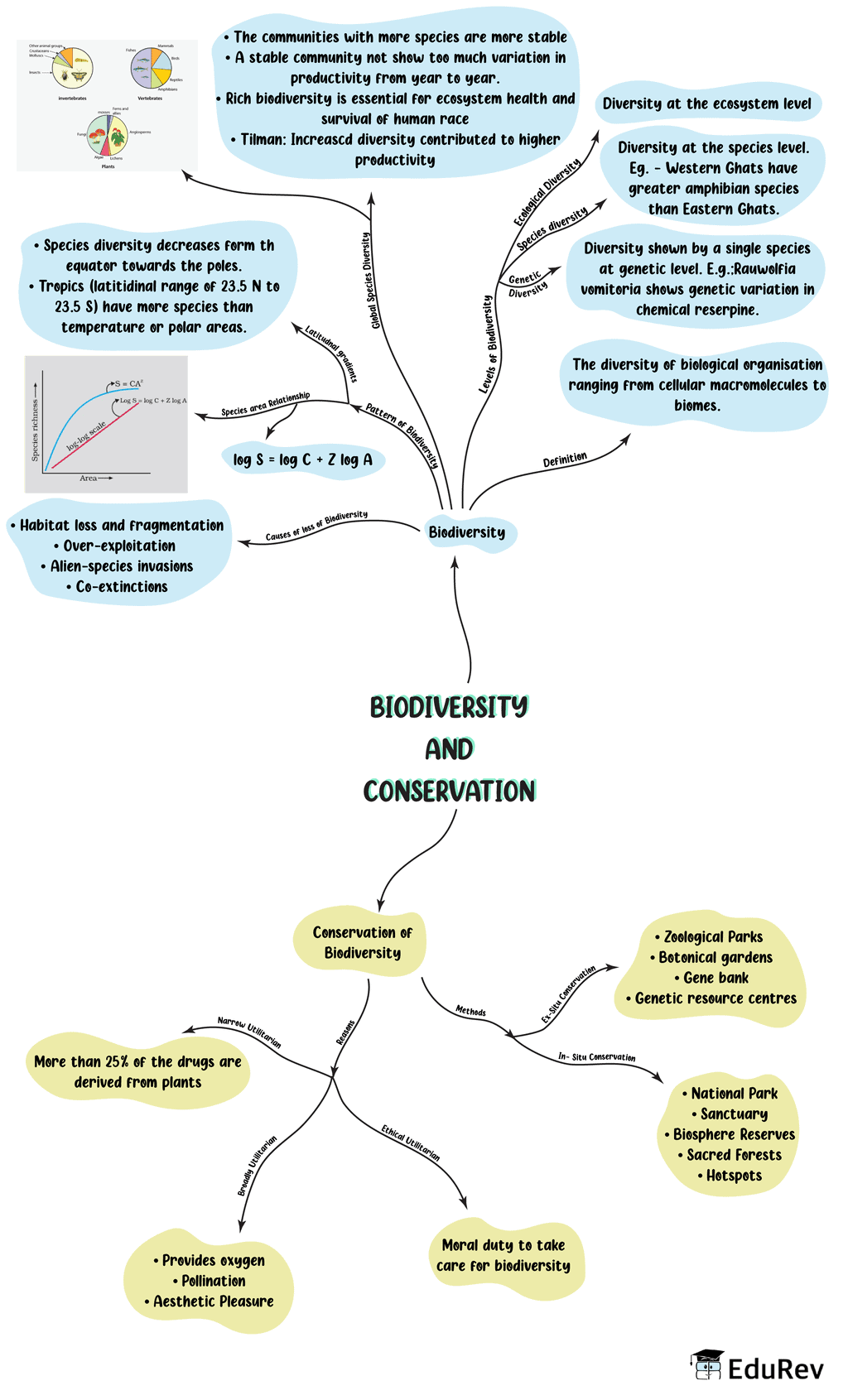NEET Exam > NEET Notes > Mind Map: Biodiversity and its conservation
Mind Map: Biodiversity and its conservation - NEET PDF Download
FAQs on Mind Map: Biodiversity and its conservation - NEET
| 1. What is biodiversity and why is it important for conservation? |  |
Ans. Biodiversity refers to the variety of living organisms present in a particular habitat or on Earth as a whole. It includes the diversity of species, genetic diversity within species, and diversity of ecosystems. Biodiversity is crucial for conservation because it provides numerous benefits such as ecosystem stability, food security, climate regulation, and the development of new medicines. Conservation efforts aim to protect and sustainably manage biodiversity to ensure its continued benefits to humans and the environment.
| 2. How is biodiversity measured and assessed? |  |
Ans. Biodiversity can be measured and assessed using various methods. One common approach is to quantify the number of different species present in a given area, which is known as species richness. Additionally, species evenness, which refers to the relative abundance of each species, can be measured to assess the distribution of species within an ecosystem. Genetic diversity can be assessed through DNA analysis, while ecosystem diversity can be evaluated by studying the different types of habitats and ecosystems present in a region.
| 3. What are the major threats to biodiversity? |  |
Ans. Biodiversity faces several major threats, including habitat loss and degradation, overexploitation of natural resources, pollution, climate change, and invasive species. Human activities such as deforestation, urbanization, intensive agriculture, and illegal wildlife trade contribute significantly to these threats. These factors can disrupt ecosystems, lead to the extinction of species, and have cascading effects on the overall balance of biodiversity.
| 4. How can biodiversity be conserved? |  |
Ans. Biodiversity conservation can be achieved through various means. Protected areas, such as national parks and wildlife sanctuaries, play a crucial role in safeguarding biodiversity by providing a safe habitat for numerous species. Sustainable land and resource management practices, such as responsible forestry and fisheries, help minimize the negative impact on biodiversity. Additionally, public awareness and education programs can promote conservation values and encourage individuals to take actions that support biodiversity conservation.
| 5. What are the benefits of biodiversity conservation? |  |
Ans. Biodiversity conservation has numerous benefits for both humans and the environment. It helps maintain ecosystem services such as pollination, water purification, and soil fertility, which are essential for human well-being. Conserved biodiversity also contributes to the development of new medicines and biomedical research. Additionally, protected areas and natural landscapes provide recreational and tourism opportunities, generating economic benefits for local communities. Overall, biodiversity conservation ensures the long-term sustainability and resilience of ecosystems.
Related Searches















